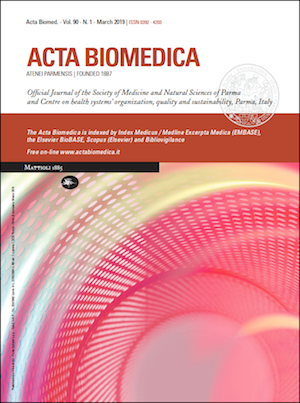The juvenile fibromyalgia syndrome (JFMS): a poorly defined disorder
Keywords:
Juvenile fibromyalgia syndrome, epidemiology, clinical characteristics, diagnosisAbstract
Juvenile fibromyalgia syndrome (JFMS) is a chronic condition characterized by symptoms of chronic diffuse musculoskeletal pain and multiple painful tender points on palpation. It is often accompanied by fatigue, disorders of sleep, chronic headaches, irritable bowel syndrome, and subjective soft tissue swelling. The complexity of the presenting clinical picture in JPFS has not been sufficiently defined in the literature. Similarities to adult fibromyalgia syndrome in JFMS are often difficult to compare, because many of the symptoms are “medically unexplained” and often overlap frequently with other medical conditions. However, a valid diagnosis of JFMS often decreases parents’ anxiety, reduces unnecessary further investigations, and provides a rational framework for a management plan. The diagnostic criteria proposed by Yunus and Masi in 1985 to define JFMS were never validated or critically analyzed. In most cases, the clinical diagnosis is based on the history, the physical examination that demonstrates general tenderness (muscle, joints, tendons), the absence of other pathological conditions that could explain pain and fatigue, and the normal basic laboratory tests. Research and clinical observations defined that JFMS may have a chronic course that impacts the functional status and the psychosocial development of children and adolescents. This paper briefly reviews the existing knowledge on JFMS focusing on the diagnosis, clinical and the epidemiological characteristics in children and adolescents for better understanding of this disorder.
Downloads
Published
Issue
Section
License
This is an Open Access article distributed under the terms of the Creative Commons Attribution License (https://creativecommons.org/licenses/by-nc/4.0) which permits unrestricted use, distribution, and reproduction in any medium, provided the original work is properly cited.
Transfer of Copyright and Permission to Reproduce Parts of Published Papers.
Authors retain the copyright for their published work. No formal permission will be required to reproduce parts (tables or illustrations) of published papers, provided the source is quoted appropriately and reproduction has no commercial intent. Reproductions with commercial intent will require written permission and payment of royalties.







